How to Get Curves in All the Right Spaces
Curves can soften a living zone, draw the eye to a certain feature or focal point, and visually lengthen an area. When used well, they can enhance the flow of a room and be used to define different spaces. They can also be useful for awkward or tricky spaces and be a practical replacement for sharp corners if you have little ones running around the home.
Curved shapes can make for an inviting and comforting aesthetic that is both cozy and powerful. Their bends and twists make them versatile inside and outside the house.
“Curves create a sense of softness as well as strength,” says landscape designer Steve Warner of Outhouse Design. “A strong garden edge or wall line that has a strong curve can open up a garden with great effect, drawing you into the space. The correct radius or curve can create impact, connect spaces and allow for deeper layered garden beds, especially in tight courtyard areas. Gardens, in my opinion, should be tactile, engaging and fun — that’s why curves work so well.”
But you do need to know how to use them. “If used inappropriately, curves can take up a lot of wasteful space. However, when used well, curves actually conserve room,” says interior designer Bronwyn Poole of Touch Interiors. “The key is to know when to use a curve to maximum benefit.”
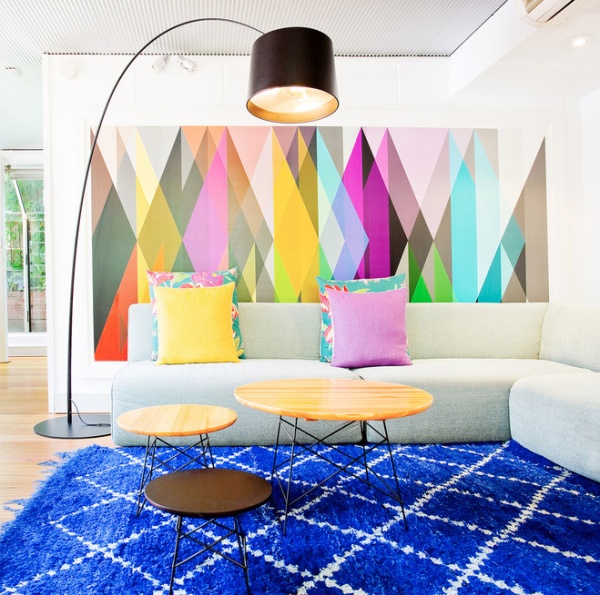
Poole often introduces curves in a subtle way by adding round occasional tables, lamps or an area rug with an organic shape. “I believe curves soften a space and inspire effortless flow in a room that may otherwise feel constricted,” she says.
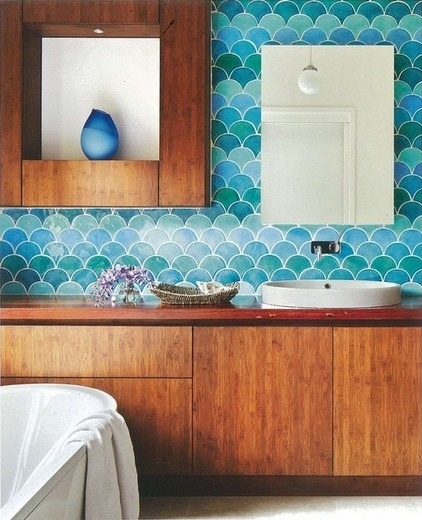
The blue curved bathroom tiles pictured here break up the strong lines and wooden tones of the cabinetry. Small and subtle curve shapes can work just as well as something bold and beautiful in the right setting.
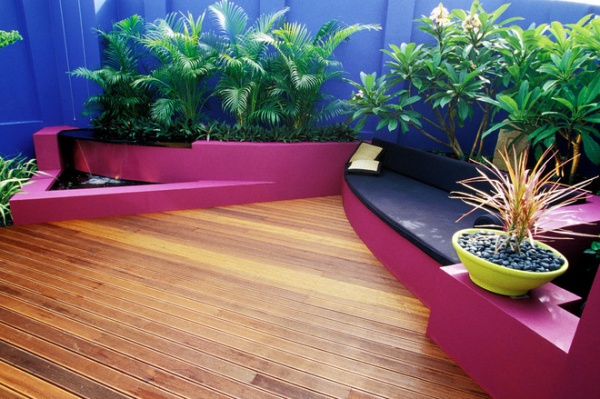
A long, sweeping curve can draw the eye into a garden area — particularly when paired with a splash of bright color, as pictured here.
Expert tip: “A curved line traversing a small space is naturally longer than a straight line, and it can give the impression of a much larger garden. Curved geometry also allows for multilayered planting rather than lineal single rows of planting,” says landscape designer Janine Mendel of CultivArt Landscape Design.
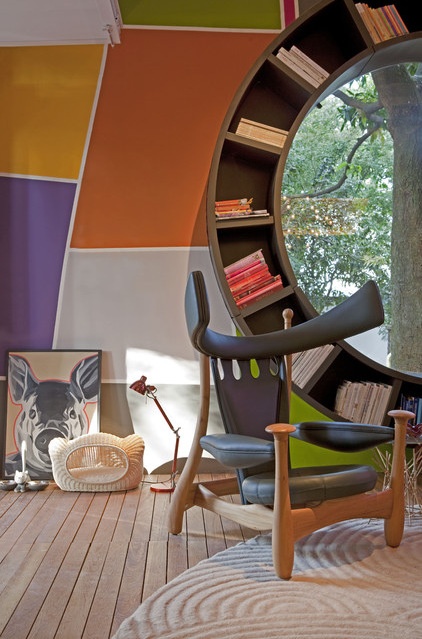
The curved bookshelf here is used to great effect. The combination of curves and colors shows just what you can do with curves when thinking outside the proverbial box. Circular windows are a great way to play up a window space and draw attention to an enticing view.
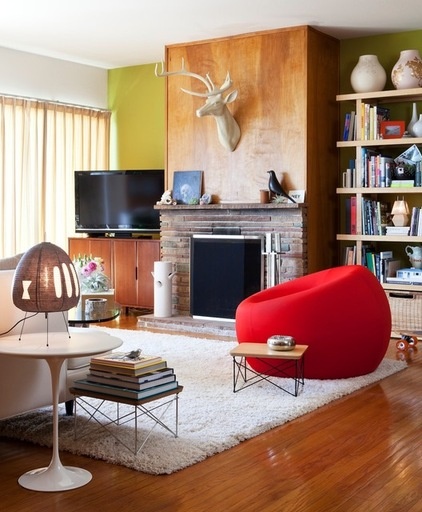
Curved furniture pieces in bright colors work well as room features or statement pieces.
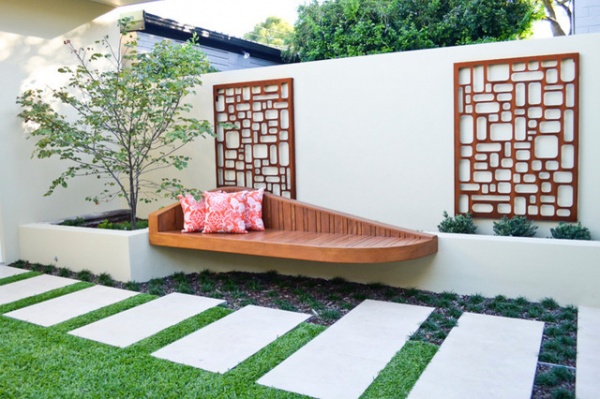
This floating garden bench seat creates an organic feel due to its curved edges.
“Rounded edges make the [wood] tactile and [convey the] feel that the seat would be comfortable, which it is. If the edges had been straight, it would give you a very different feeling,” says Warner, who designed the piece.
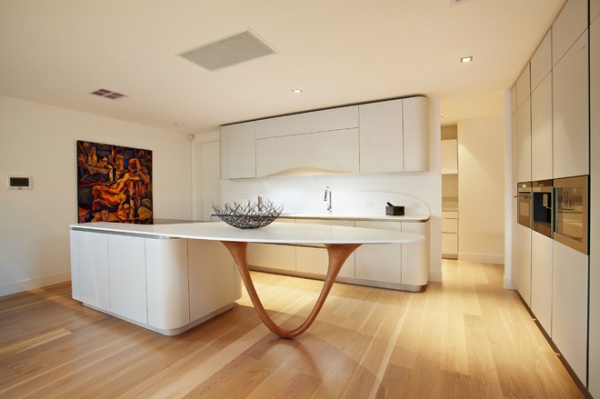
The parabolic base of the breakfast bar lends distinction to the whole kitchen area. Simple curved touches applied sparingly can have elegant and attention-grabbing results.
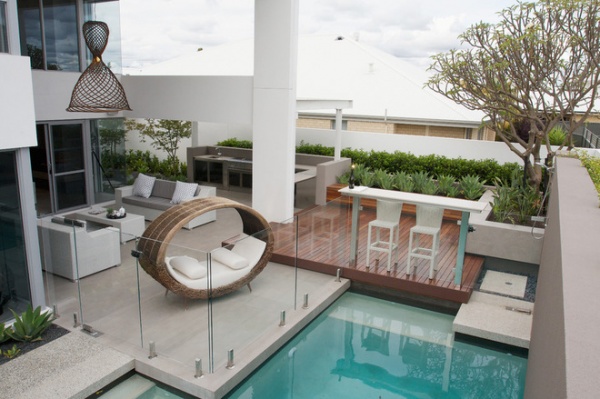
The curved poolside daybed pictured here subtly breaks up the strong lines of this clean, sleek outdoor design. The soft, light brown color of the woven daybed works with the wood flooring and hanging light feature to add a natural element to the modern design.
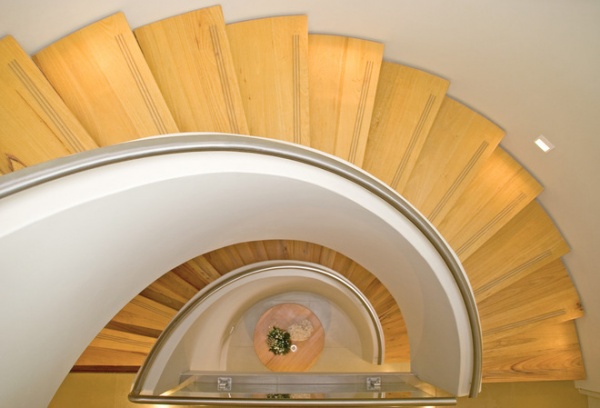
There is no reason staircases need to be straight up and down. This spiral staircase resembles a curving seashell — perfect for this beach home.
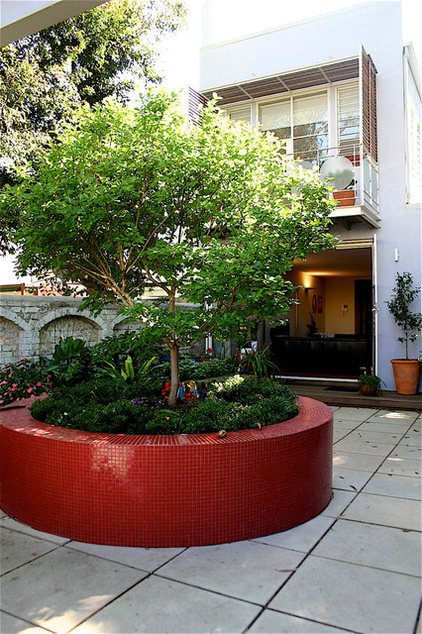
This circular raised red planter makes a bold statement in its courtyard. Filled with a crape myrtle, the planter works as an eye-catching feature, but due to its central placement also divides the outdoor area into different zones.
Expert tip: “When using curves in a garden, they need to be definite, not just wavy lines. Even a naturalistic landscape benefits from a well-structured curve,” says Poole.
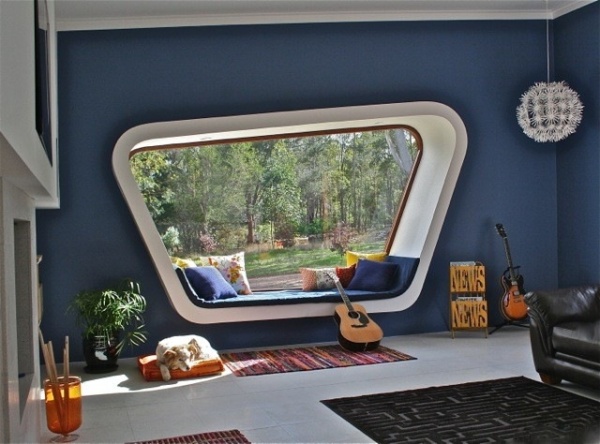
It’s amazing how a few touches can transform a bay window into a standout feature.
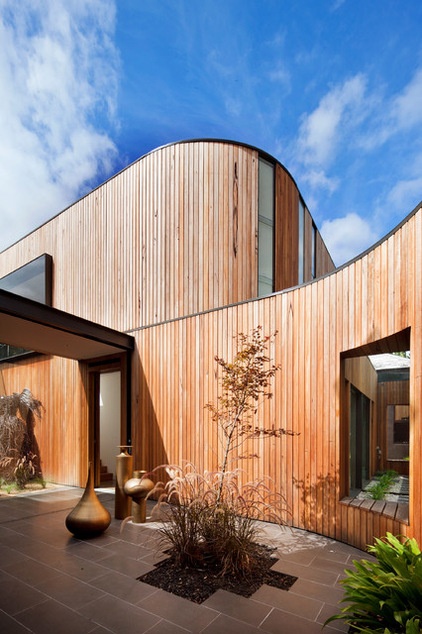
The architecture of this home’s exterior shows how curves combine softness and strength. Although this home has a very modern design, the curves make it appear approachable. The natural color palette and strong curved lines draw you into the space.
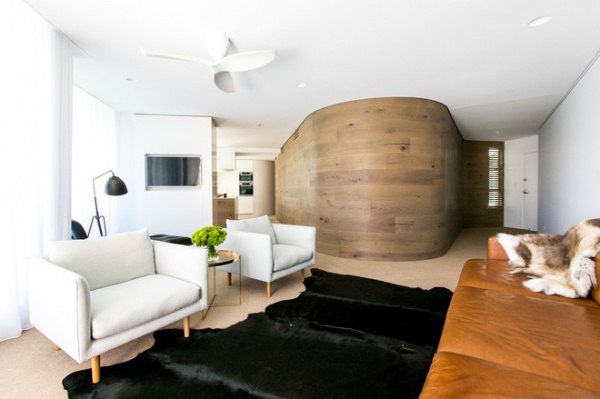
Wood floorboards weren’t an option in this living space, so the designers placed them on the wall instead. The curved look was created with pregrooved Mafi boards, adding texture and a sense of warmth.
Take a tour of this seaside home
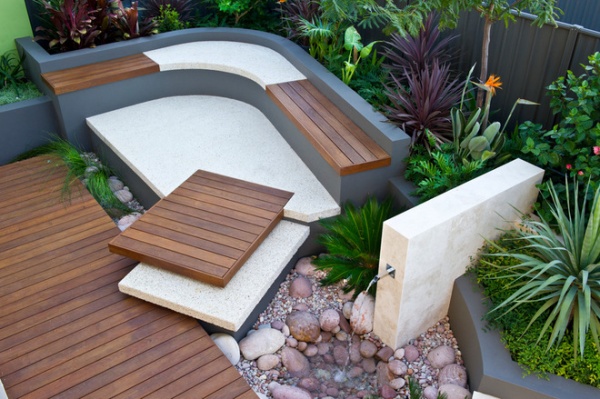
Curved lines are a small garden’s or courtyard’s best friend. When mixed with straight lines and assorted plantings, they can create an attractive and visually interesting outdoor hub.
Expert tip: “In a small garden, I find the combination of angles and curves a very useful design strategy,” says Mendel. “Curves are a very effective tool for successfully merging obtuse and acute angles which are changing direction. Curves can also give a more organic feel to a garden area.”
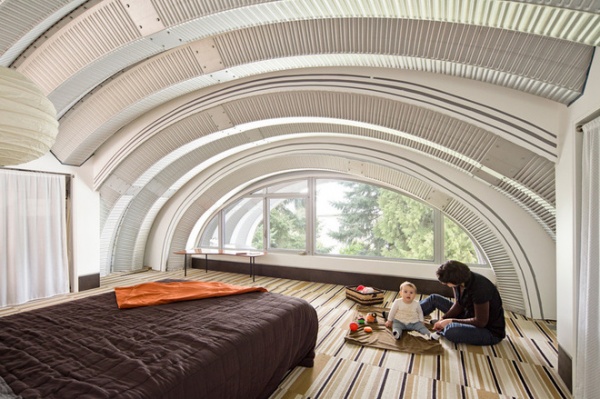
The vaulted ceilings of this bedroom are guaranteed to have you looking up instead of down. A curved roof doesn’t have to be classic in style. A curved modern-style roof can be breathtaking.
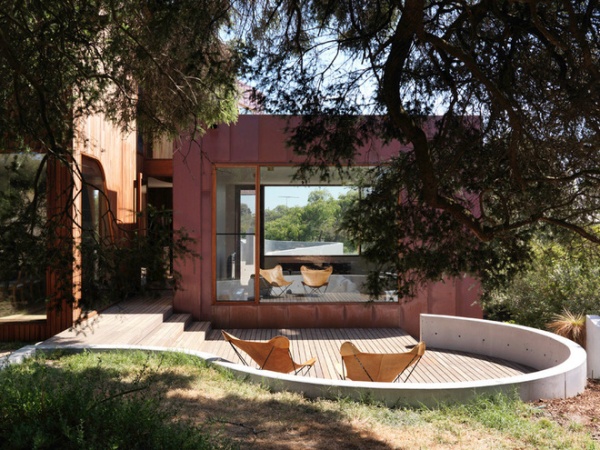
This hardwood timber deck is framed by a dramatic concrete retaining wall reminiscent of the shape of an unfinished question mark. The curved wall opens up the deck area and provides a point of difference to the straight lines of the home’s exterior.
Expert tip: “The correct curve or circle will make you feel safe and protected, such as when seating is located within the inner radius of a strong curved wall that wraps around you,” says Warner.
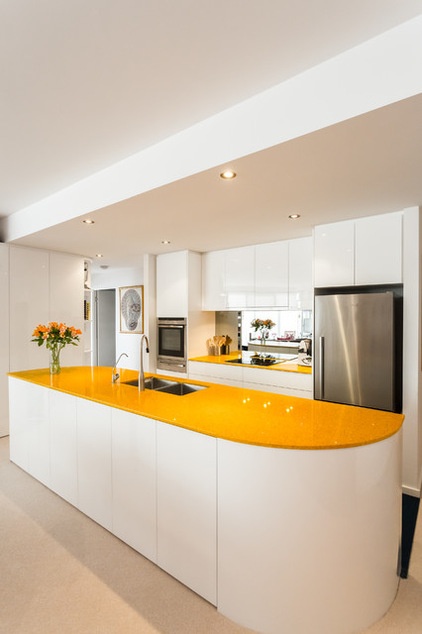
Draw attention to your curves with color. This curved yellow countertop catches the eye.
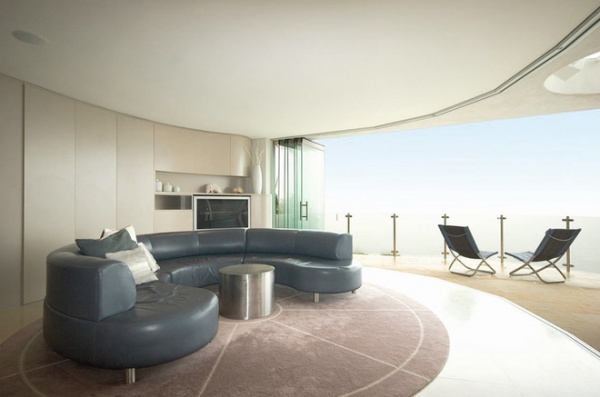
Curves work with curves. The curved sofa in this living room opens up both the space and the range of design possibilities. The curved shape is further echoed by the doors, cabinetry and overall shape of the room. “The sofa sits naturally within its environment, whereas if the room was a regular square room, this curved sofa could be like a fish out of water,” says the designer, Poole.
Brilliant Solution: The Curved Sofa
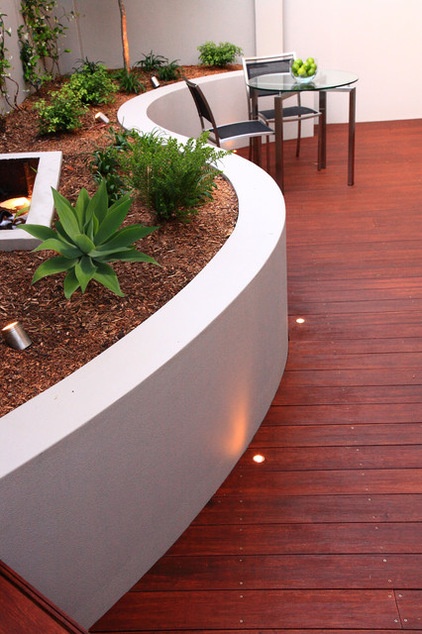
The low, curved wall pictured here provides both form and function. It allows for a deeper-set garden bed for plantings as well as the ability to cradle a water feature with strong planting lines. The low wall also provides casual seating for the homeowners and guests. Subtle floor lights highlight the shape of the wall without detracting from it.
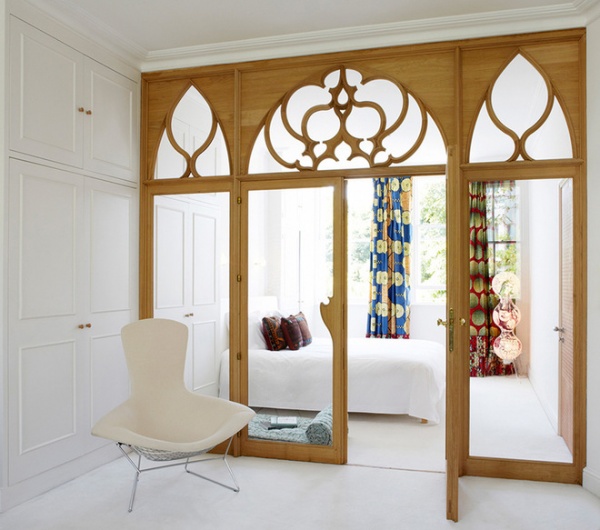
This Lebanese-style doorway with a Gothic twist separates bedroom and dressing room areas. The ornate arches turn what might have been a humble room partition into something special.
More:
Design School: Embrace the Curve
Design Details: How to Show Off Your Curves












